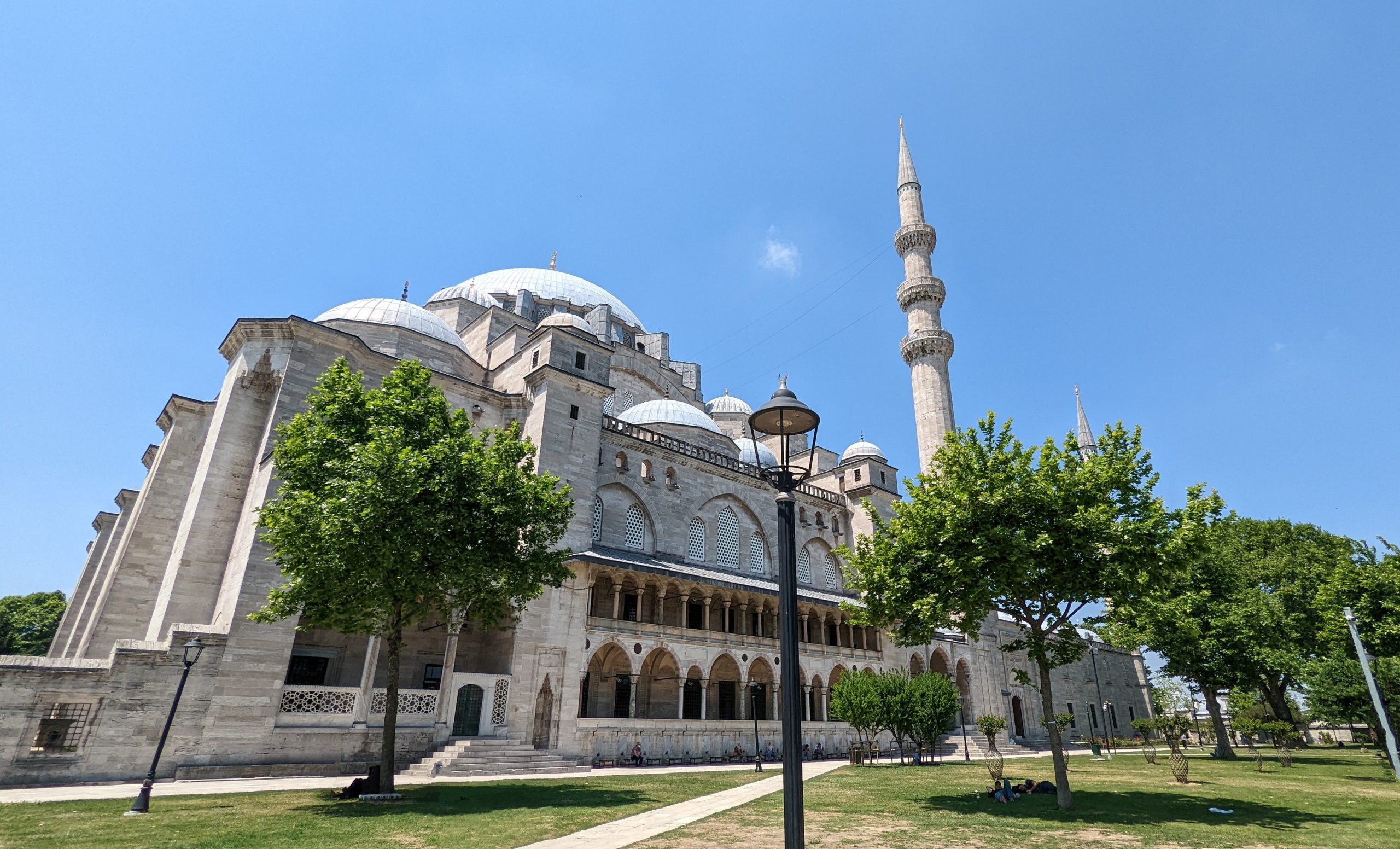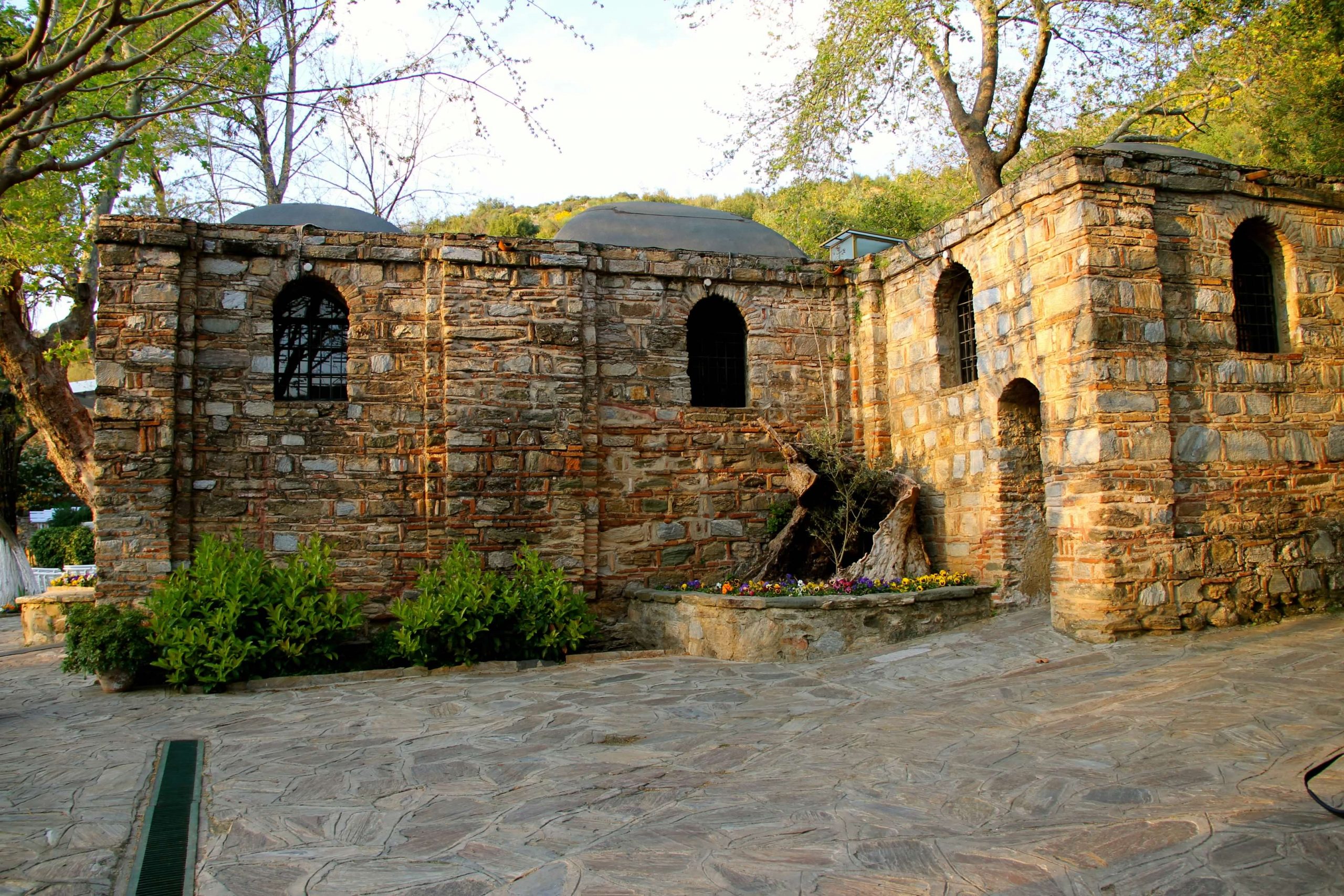13 North Africa & the Middle East: Cultural Geography I –
The Abrahamic Religious Hearth
“It is almost impossible to overemphasize the importance with which ancestry is held in the Middle East and North Africa.”
- Tahir Shah, author and journalist
The Middle East was the origin of three major religions – Judaism, Christianity, and Islam. They collectively serve as the faiths of more than half the world’s population. Known as the Abrahamic religions, for the patriarch Abraham, or as the Semitic religions, for the languages spoken by their earliest adherents, these faiths form a sort of trilogy, with deep historical and cultural connections. Their strongest theological bond is monotheism, a belief in one God. Significantly, Jews, Christians, and Muslims all worship the same God, an omnipotent entity who they believe created the earth and the universe beyond. Each faith has its own sacred text – the Torah in Judaism, the Bible in Christianity, and the Quran in Islam.
Judaism
 Judaism is the oldest of the Abrahamic faiths. Its oldest known texts date to the 6th century BCE, but its traditions may be more than 4,000 years old. Abraham, the patriarch of the Jewish people, lived in Mesopotamia, the location of modern-day Iraq. According to Jewish tradition, Abraham was led by God to settle in the land of Canaan (modern-day Israel and Palestine). Through his son, Isaac, Abraham was the forbearer of a nation that would be God’s chosen people, provided they adhered to the Law set forth by God.
Judaism is the oldest of the Abrahamic faiths. Its oldest known texts date to the 6th century BCE, but its traditions may be more than 4,000 years old. Abraham, the patriarch of the Jewish people, lived in Mesopotamia, the location of modern-day Iraq. According to Jewish tradition, Abraham was led by God to settle in the land of Canaan (modern-day Israel and Palestine). Through his son, Isaac, Abraham was the forbearer of a nation that would be God’s chosen people, provided they adhered to the Law set forth by God.
Judaism was unique for its time. Most other religions of the era were polytheistic, animistic, and shamanistic, meaning that they worshipped multiple gods that dwelt within the natural environment, and that the will of the gods were channeled through spiritual figures (known as shamans). Judaism, conversely, was strictly monotheistic. The Jewish God is a supernatural entity that created the earth and is largely separate from it, and the will of God is derived not from shamans, but from holy texts.
Judaism has an exceptionally strong geographic connection to Israel, and especially so to Jerusalem. The ancient city was home to the Jewish Temples, which contained the Holy of Holies, where God dwelled on earth. The only remnant of the Temple is the Western Wall, which today is Judaism’s most sacred structure.
Judaism is an ethnic religion, meaning that the majority of its followers are “born into” the faith. Although it is possible, in some Jewish sects, for those not born to a Jewish family to convert to the religion, the conversion of nonbelievers is not a priority in Judaism. As a result, its is by far the smallest of the Abrahamic faiths. There are about 14 million Jews worldwide, accounting for 0.2% of the global population. About half of the world’s Jewish population lives is in Israel, and another 40% live in the United States. The remaining Jewish population is concentrated primarily in France, Britain, Russia, Canada, Australia, and Argentina, but there are small Jewish communities scattered throughout the world.
The dispersed geography of Judaism dates to the first century CE, when the Jews in Palestine rebelled against Roman rule. The Romans responded by destroying the Temple in Jerusalem and expelling the Jews from their homeland, an event known as the Diaspora. These Jewish refugees resettled throughout Africa and Asia, but the majority eventually found their way to Europe. In 1880, about 90% of the world’s Jews resided in Europe, especially in the central and eastern part of the region – Poland and Russia had particularly large Jewish populations. In the late 1800s, European Jews began migrating to the United States in large numbers, seeking economic opportunity and freedom from religious persecution. Nevertheless, in the 1930s, nearly 60% of the world’s Jews still lived in Europe. More than two-thirds of them – six million people – would be murdered by Nazi German government and other fascist powers during the Holocaust. After 1945, many of Europe’s remaining Jews migrated to the Americas or to Israel. (For a discussion of Israel’s origins, see Chapter 15).
Christianity
 Christianity is based on the teachings of Jesus of Nazareth, also known as Christ. Jesus was a Jew who lived in Palestine 2,000 years ago. Christians believe he was the son of God, and a living manifestation of God on earth. Christianity is rooted in Jewish tradition. The Christian Bible is divided primarily into two sections – the Old Testament and the New Testament. The Old Testament is essentially the Jewish Torah, while the New Testament is based on the teachings of Christ and his disciples. Christians, therefore, do not view Judaism as wrong, but as incomplete. According to Christian tradition, Jesus was the Messiah prophesied in Jewish doctrine. Christians believe that, through Christ, God’s covenant with the Jews was extended to all of humanity.
Christianity is based on the teachings of Jesus of Nazareth, also known as Christ. Jesus was a Jew who lived in Palestine 2,000 years ago. Christians believe he was the son of God, and a living manifestation of God on earth. Christianity is rooted in Jewish tradition. The Christian Bible is divided primarily into two sections – the Old Testament and the New Testament. The Old Testament is essentially the Jewish Torah, while the New Testament is based on the teachings of Christ and his disciples. Christians, therefore, do not view Judaism as wrong, but as incomplete. According to Christian tradition, Jesus was the Messiah prophesied in Jewish doctrine. Christians believe that, through Christ, God’s covenant with the Jews was extended to all of humanity.
Christianity is a universalizing religion, meaning that Christians believe that their faith can (and some Christians would argue should) apply to everyone. The conversion of non-believers has long been a key element of Christianity. Between the 100s and 300s CE, Christianity slowly diffused from its hearth in Palestine, spreading to South Asia, northeast Africa, Turkey, and southern Europe. The most transformative moment in Christianity occurred in the 300s, when the Roman Emperor Constantine decriminalized Christianity, and eventually converted to it. After Christianity became the official religion of the Roman Empire, many Europeans converted to the faith, and it would eventually become the dominant religion in the region. Over the next 1,500 years, Christianity would spread (often by European colonization) throughout the Americas and much of Africa, and to parts of East and Southeast Asia.
In the 600s and 700s, Christianity was largely replaced in North Africa and the Middle East by Islam, but significant pockets endure. About a third of Lebanon’s population is Christian, as is more than 10% of the populations of Egypt and Syria. Small but significant Christian communities can also be found in Jordan, Israel, Iraq, Libya, Morocco, and the UAE.
Islam
 Islam, the third part of the Abrahamic trilogy, emerged in the 7th century CE. According to Muslim tradition, the Archangel Gabriel revealed the principles of the faith to Muhammad, a merchant who lived in the trading town of Mecca on the Arabian Peninsula. The messages to Muhammad are contained in Islam’s holy text, the Quran. Although Muhammad was the founder of Islam, his role is different from that of Jesus in Christianity. Christians consider Jesus to be God incarnate. Muslims, conversely, do not worship Muhammad as a deity, although he is deeply revered as the last and most important in a series of prophets. Islam is, in many ways, an extension of Jewish and Christian traditions. Abraham, Moses, Jesus, and many other Judeo-Christian figures appear in the Quran as prophets. Much like the relationship between Christianity and Judaism, Muslims do not regard their Abrahamic predecessors as being entirely wrong, but as incomplete.
Islam, the third part of the Abrahamic trilogy, emerged in the 7th century CE. According to Muslim tradition, the Archangel Gabriel revealed the principles of the faith to Muhammad, a merchant who lived in the trading town of Mecca on the Arabian Peninsula. The messages to Muhammad are contained in Islam’s holy text, the Quran. Although Muhammad was the founder of Islam, his role is different from that of Jesus in Christianity. Christians consider Jesus to be God incarnate. Muslims, conversely, do not worship Muhammad as a deity, although he is deeply revered as the last and most important in a series of prophets. Islam is, in many ways, an extension of Jewish and Christian traditions. Abraham, Moses, Jesus, and many other Judeo-Christian figures appear in the Quran as prophets. Much like the relationship between Christianity and Judaism, Muslims do not regard their Abrahamic predecessors as being entirely wrong, but as incomplete.
Like Christianity, Islam is a universalizing religion, seeking to convert nonbelievers. Unlike Christianity, Islam spread quite rapidly during its first century of existence. In the 600s and 700s, the Arab-Islamic Empire spread the religion throughout the Middle East, North Africa, and Central Asia (see Chapter 13). Today, North Africa and the Middle East are more than 90% Muslim. Between the 800s and 1200s, Arab merchants and empires carried Islam to parts of Sub-Saharan Africa, South Asia, and Southeast Asia. In the 1400s and 1600s, the Ottoman Empire brought Islam to parts of southeastern Europe. Most of the recent spread of Islam has been the result of relocation diffusion. Migrants from the Muslim world have established small but rapidly expanding communities throughout Europe and North America.

Islam contains numerous denominations (subgroups), but the two largest are Sunni and Shia Islam. This division dates back to a time shortly after the death of Muhammad, when early Muslims debated who should be the rightful successor to the Prophet. Sunnis make up about 85% of the world’s Muslim population, and are the majority in most countries in North Africa and the Middle East. Shias make up about 10% of the world’s Muslim population. They form the majority in Iran, Oman, Bahrain, account for about half of Iraq’s population, and are significant minorities in Lebanon, Yemen, Kuwait, Syria, Turkey, Saudi Arabia, and the UAE.
Did you know?

Turkey is now a secular Islamic country, but its Constantinople (now Istanbul) formerly was the center of Eastern Orthodox Christianity. The Virgin Mary, revered in both Christianity and Islam, is understood to have lived here final years in the house pictured here in Selçuk/İzmir, Turkey.
The Süleymaniye Mosque, pictured above, was commissioned by Suleiman the Magnificent, who was the longest reigning Sultan of the Ottoman Empire (for 46 years).
My Turn!
CITED AND ADDITIONAL BIBLIOGRAPHY:
Haen-Darden, Stacie. Last Home of the Virgin Mary. Photo.
Savage, Cynthia Gronewold. Süleymaniye Mosque, Istanbul, Turkey. Photo, 2022.

